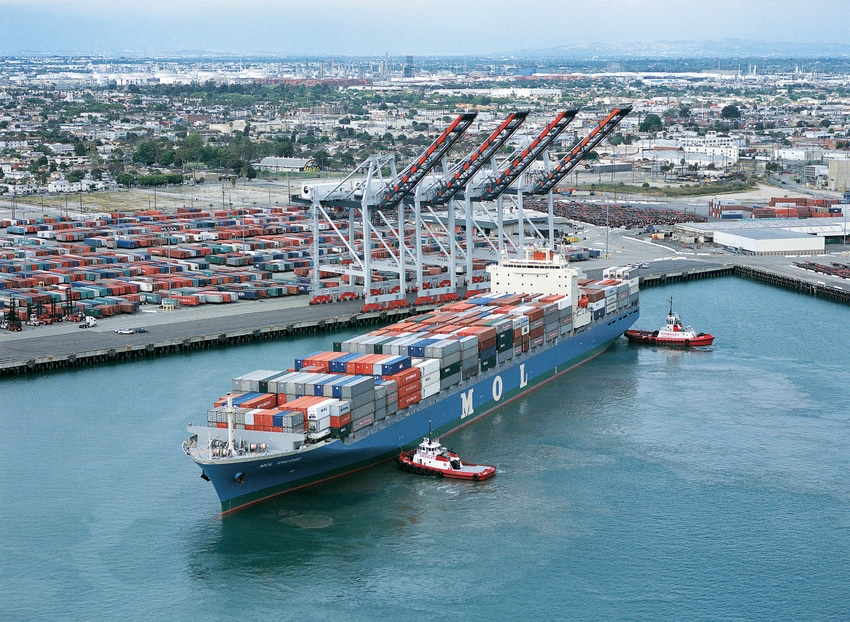Developing countries' first-half export earnings up 4.6% versus prior year.
November 13, 2020

Global trade in food products has proved remarkably resilient during the pandemic, with developing countries even managing to increase export revenues, according to a new report published by the U.N. Food & Agriculture Organization (FAO).
Data available through June "suggest strong, albeit not complete, resilience of the global food markets to COVID-19 shocks," the semiannual "Food Outlook" report said in a special feature on recent trends in food imports bills and export earnings.
"The global food import bill for the whole of 2020 may even exceed that of 2019," FAO economist and co-author Josef Schmidhuber said . "There is, however, a noticeable shift away from high-value food items to staples."
Developing countries have demonstrated notable "vivacity" in buoying global food trade flows, the analysis showed. Their export earnings in the first half of 2020 rose 4.6% compared to the same period of the previous year, while those of developed countries declined. That is partly explained by the sharpest drops occurring for beverages, fish and meat, as demand for those is more responsive to the decline in household incomes triggered by the contracting global economy.
Over the same period, world imports of beverages fell by more than 12%, and fish products declined by more than 10%, while the value of trade in animal and vegetable oils and oilseeds both increased by almost 10%. The report offers a rich series of graphics, data and analyses of trends by food group and region.
Commodity market trends
According to the report, cereal markets in 2020-21 are well supplied, with prices affected by tightening markets for wheat and robust international demand for coarse grains and rice. FAO recent updated its supply-and-demand forecasts for cereals last week.
Global production of oilseeds and derived products is expected to reach a new record over the 2020-21 seasons, while rising demand points to tightening markets.
World sugar production in 2020 is seen rebounding, albeit below the pace of growing consumption, which will depend on whether further COVID-19-related lockdown measures are imposed.
Global meat production in 2020 is projected to decline for the second year in a row amid subdued trade and demand prospects.
World milk production in 2020 is also predicted to expand, buoyed by favorable monsoons and the resilience of village cooperative networks in collecting milk amid logistic hurdles in India, along with government stabilization assistance in the European Union and the U.S.
For the fisheries sector, which suffered a large drop in trade flows, production is expected to decline in 2020 due to the pandemic's impact on demand, logistics, prices, labor and business planning. Capture fishery output will likely decline slightly, while aquaculture production is expected to decline for the first time in many years.
The report noted that the pandemic's impact on the market for fish -- notably a drop in demand for fresh fish due to an aversion to going to markets and restaurants -- has triggered "far-reaching changes" that are likely to persist in the long term and support product innovation, shorter value chains and new distribution channels.
Tropical fruit value chain rattled
The FAO report pointed out that the COVID-19 pandemic has particularly rattled the value chain for tropical fruits, especially the most perishable items, which require labor-intensive handling and rapid and often airborne transport and have relatively high costs.
“Global trade in pineapples, mangos and papaya has declined, sometimes at a double-digit pace,” the authors noted.
As such, tropical fruit producer margins are under pressure from pandemic disruptions as well as highly competitive value chains, the intensifying market power of downstream actors, the occurrence of plant diseases and adverse weather events.
"It will be critical to develop policies aimed at providing financial support to producers so that they can remain operational while protecting the health and safety of workers and minimizing disruptions to national and international transport routes," FAO economist Sabine Altendorf said.
Bananas and avocados, by contrast, have shown some resilience, with both fruits posting export growth. However, the report said critical strains have affected their value chains, especially for smaller producers, who face elevated prices of fertilizer and pesticides and have suffered from cancelled orders.
Still, demand for bananas has benefited from their perceived sanitary safety, convenience and record supplies from Ecuador as well as an output recovery in Costa Rica.
Avocado trade has also grown on a global basis, the report relayed, as seasonally lower supplies from Mexico and an outright drop in purchases in the U.S. have been more than offset by robust demand in the EU and significantly higher supplies from Colombia, Kenya and Peru.
You May Also Like


.png?width=300&auto=webp&quality=80&disable=upscale)
